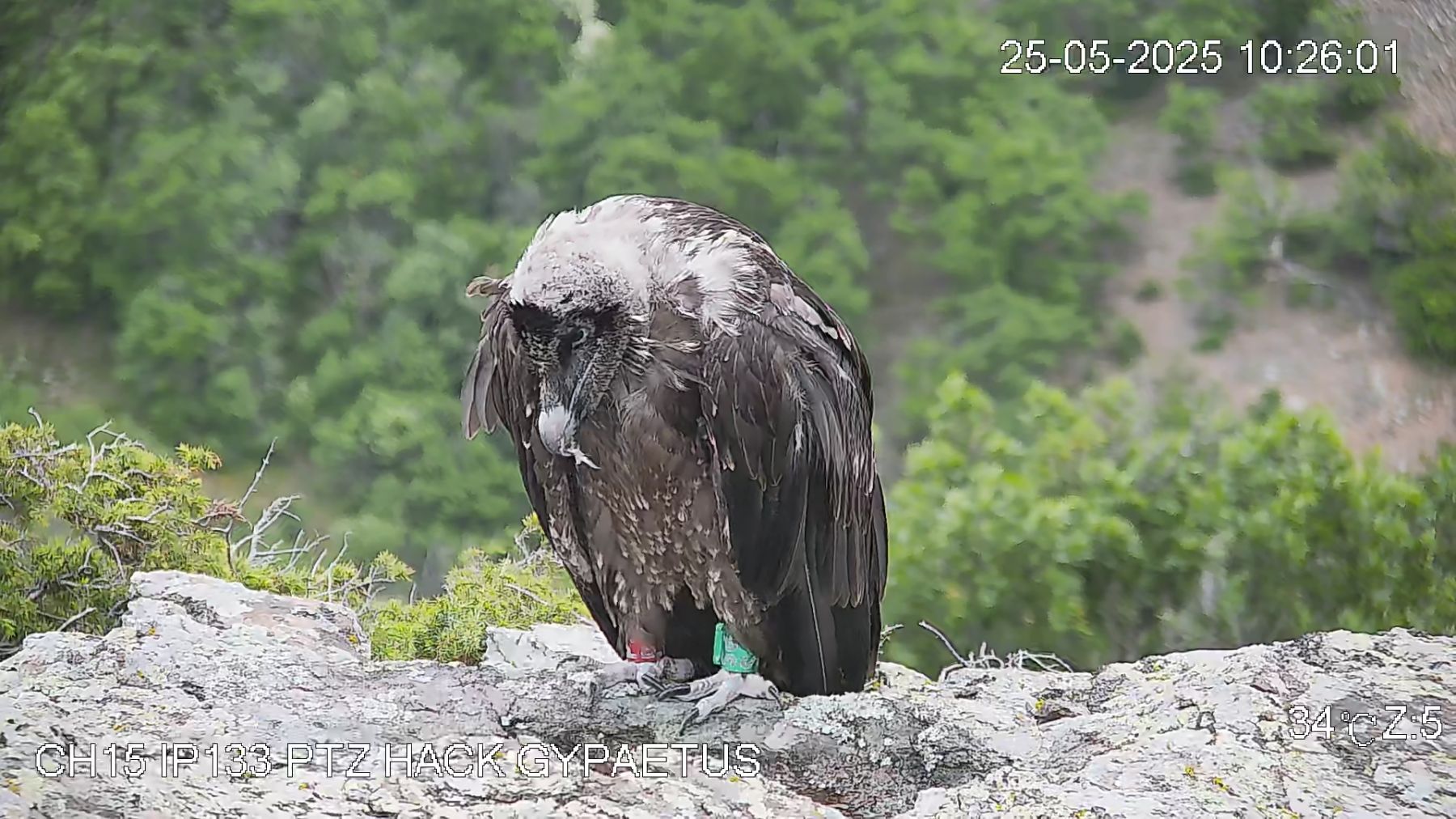
LIFE GypConnect is coming to an end. The project aimed to strengthen the Bearded Vulture population by creating new population nuclei in the Drôme and the Massif Central in France and promoting the movement of birds from these population nuclei between the Alps and the Pyrenees. To achieve these objectives, the project team released Bearded Vultures in the French Pre-Alps and the Massif Central to reintroduce the species, tackled threats, and improved access to safe food resources.
The LIFE GypConnect Layman’s Report is now available in French and English, discussing the key actions implemented and results achieved within the framework of the project. This blog post also highlights the main outcomes presented in the report.
Bearded Vulture Reintroduction
The primary emphasis of the LIFE GypConnect project was Bearded Vulture reintroduction to establish new population nuclei to reconnect the Western Alps and the Eastern Pyrenees populations and to safeguard the gene flow necessary for the species viability. The Bearded Vulture Captive Breeding Network, coordinated by us at the Vulture Conservation Foundation on behalf of EAZA’s Endangered European Species Programme (Bearded Vulture EEP), provided captive-bred birds for release. The project used four release sites, including a new one in the Drôme region, and released a total of 42 young Bearded Vultures using the hacking method in the Pre-Alps and Massif Central between 2015 and 2021. As a result, 4 to 5 pairs were formed in the LIFE intervention areas, and numerous exchanges of birds between the various mountain ranges help consolidate the flow between the Alps and the Pyrenees.
Improving food availability

To make the region more attractive to the Bearded Vulture, encourage the settlement of the species and improve the survival of released birds, the project improved the availability and accessibility of safe food resources by creating and managing a network of scavenger feeding stations in the project’s intervention zones. The project team created an additional 29 feeding places and eight specific feeding sites for Bearded Vultures.
Tackling threats
The project team monitored the mortality of necrophagous birds of prey in target areas, collecting and examining 203 carcasses, including 15 Bearded Vultures, 150 Griffon Vultures and 20 Cinereous Vultures. This action helped identify electrocution, collision, trauma, poisoning and illegal shooting as prevalent threats, which enabled the team to implement targeted measures to help reduce threats and thus vulture mortality. Key outcomes include the neutralisation of almost 7 km of dangerous power lines and the installation of anti-collision and anti-electrocution devices over 12 km of power lines. Furthermore, lead poisoning is particularly threatening to Bearded Vultures as they can die from intoxication by directly consuming lead fragments from carcasses shot with lead ammunition. The project team carried out a lead-free ammunition experiment, promoting copper ammunition as a safe alternative for large game hunting among the local hunting community to mitigate the threat.
What happens next?
Efforts relating to Bearded Vulture reintroduction, tackling threats and deploying feeding stations must continue to guarantee the viability of the species across the country. The project also drafted a new action plan and is working to set up another LIFE project to consolidate the results achieved.
Review and download the LIFE GypConnect Layman’s Report in English
Lisez et téléchargez le Layman’s Report du projet LIFE GypConnect en français
The LIFE GypConnect project

Led by the League pour la Protection des Oiseaux (LPO), the LIFE GypConnect project aims to establish a breeding population of Bearded Vultures in the Massif Central and Department of the Drôme. Releasing captive-bred Bearded Vultures into the wild at sites such as the Parc Naturel Régional des Grands Causses, Parc Naturel Régional des Baronnies Provençales and Parc Naturel Régional du Vercors will create a core population that will connect the two populations of the species in the Alps and Pyrenees. To facilitate movements between the new population and the Alpine and Pyrenean populations the LIFE GYPCONNECT team is creating a network of supplementary feeding stations, and tackling threats such as poisoning, and collision and electrocution with the electricity infrastructure.




